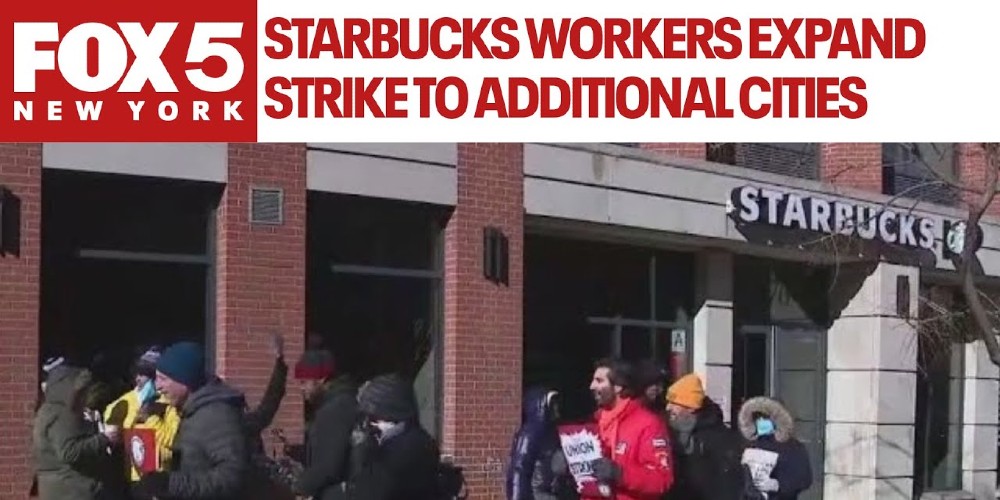Starbucks workers are stepping up their fight for better pay and conditions, with a growing strike now affecting hundreds of stores across the U.S. What began with just 60 Starbucks locations has now expanded to over 300, according to Starbucks Workers United, the union representing the company’s employees.
The timing? It’s no coincidence this all unfolds during the holiday rush—a crucial period for retail and service industries.
Workers Demand Better Wages and Conditions
Starbucks employees say they’re fed up with stagnant wages, staffing issues, and unpredictable schedules. On Christmas Eve, about 5,000 workers were expected to join the strike in major cities like New York City, Boston, Los Angeles, and Starbucks’ hometown, Seattle.
On the other side, a company spokesperson argues Starbucks already offers a compelling package. They highlight competitive pay, free college tuition, stock options, and other benefits. However, the company criticized union leaders, claiming they walked away from recent negotiations. In a statement, Starbucks said they’re “ready to continue negotiations when the union comes back to the bargaining table.”
One worker involved in the strike countered, saying, “We’re the ones doing the labor that makes this company money. If Starbucks wants us to keep providing that labor, they need to compensate us fairly.” This highlights a growing tension between employees and corporate management as unionized workers push for more.
Broader Labor Movement Gains Momentum
It’s not just Starbucks making headlines for labor disputes. Workers at retail giant Amazon are also striking during the busy holiday season. Members of the Teamsters union have been picketing at Amazon facilities since last Thursday, similarly demanding better pay and work conditions.
“Beef Steak” – our most popular survival beef product – is on sale now.
Promo code “steak40” at checkout for 40% off!
Union representatives say Amazon has refused to come to the table for even a basic labor agreement. In some instances, striking workers organized protests to block deliveries from leaving warehouses, aiming to disrupt holiday operations. The timing? Strategic, to say the least.
Both Starbucks and Amazon seem to believe these strikes won’t have a major impact. Starbucks operates over 10,000 stores nationwide, so disruptions at 300 locations could still leave most outlets running smoothly. Similarly, Amazon pointed out that union members make up only about 1% of their entire workforce.
Strategic Strikes During the Holidays
Why now? For unions, the holiday season represents a powerful leverage point. With gift-giving, celebrations, and travel in full swing, retail and logistics companies are stretched thin. A disruption—no matter how small—can create ripple effects. It’s like pulling a thread on a tightly knit sweater: it may unravel faster than you expect.
Striking during the busiest weeks of the year sends a clear message. Workers want these companies to listen, and the timing makes it hard to ignore the pressure.
What’s Next for Starbucks and Amazon?
As the strikes continue, the question looms: how will these companies respond? Will Starbucks come back to the table and address the union’s concerns, or will the stalemate drag out? And will Amazon budge under pressure from Teamsters picketing their facilities?
For now, both Starbucks and Amazon appear confident they can weather this storm with minimal disruption. But as more workers join the picket lines, their voices are only getting louder. Whether or not that translates into tangible changes remains to be seen.
Conclusion
Big Labor has become more focused in recent years as sentiment towards larger corporations deteriorates. Much of this can be blamed on personal hardships felt by millions of Americans through the poor economy under the Biden regime.
Article generated with assistance from AI.
What Would You Do If Pharmacies Couldn’t Provide You With Crucial Medications or Antibiotics?
The medication supply chain from China and India is more fragile than ever since Covid. The US is not equipped to handle our pharmaceutical needs. We’ve already seen shortages with antibiotics and other medications in recent months and pharmaceutical challenges are becoming more frequent today.
Our partners at Jase Medical offer a simple solution for Americans to be prepared in case things go south. Their “Jase Case” gives Americans emergency antibiotics they can store away while their “Jase Daily” offers a wide array of prescription drugs to treat the ailments most common to Americans.
They do this through a process that embraces medical freedom. Their secure online form allows board-certified physicians to prescribe the needed drugs. They are then delivered directly to the customer from their pharmacy network. The physicians are available to answer treatment related questions.


